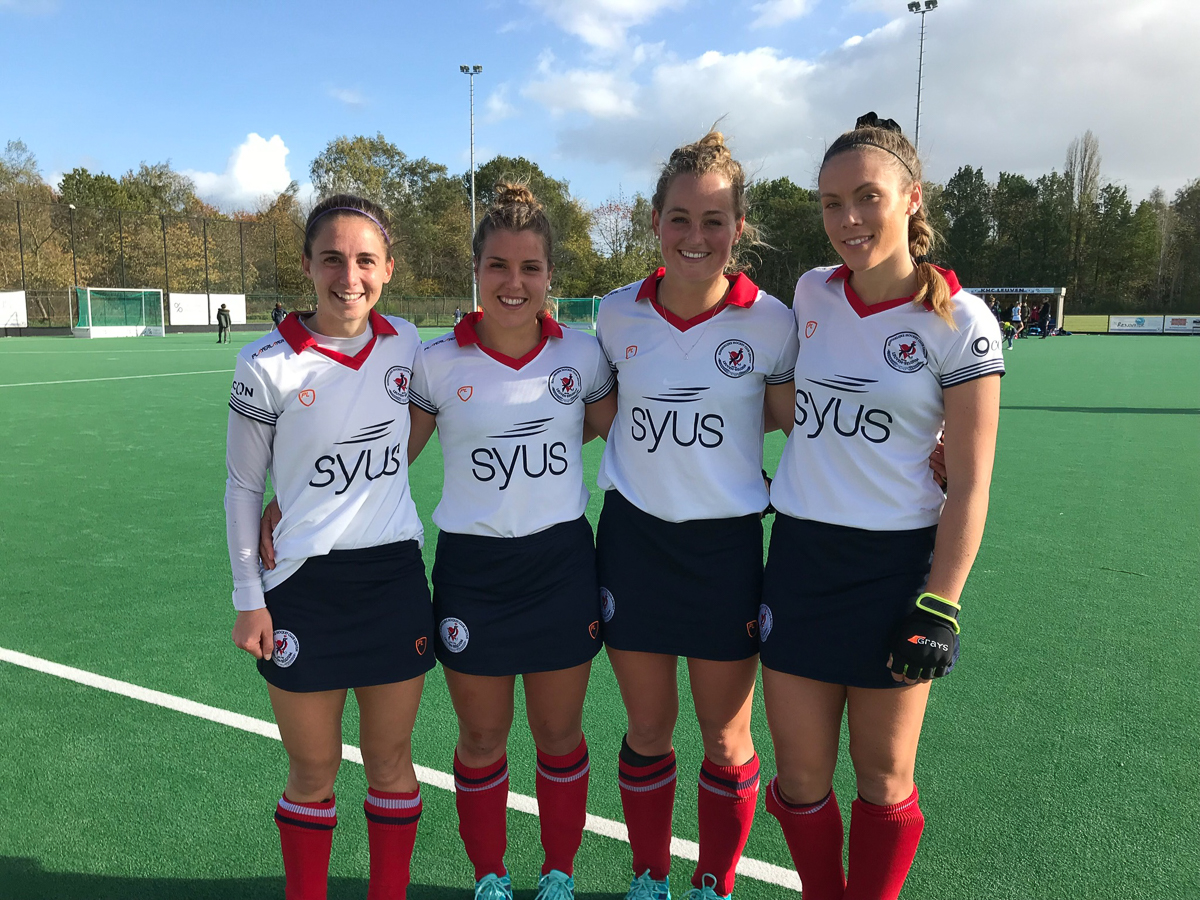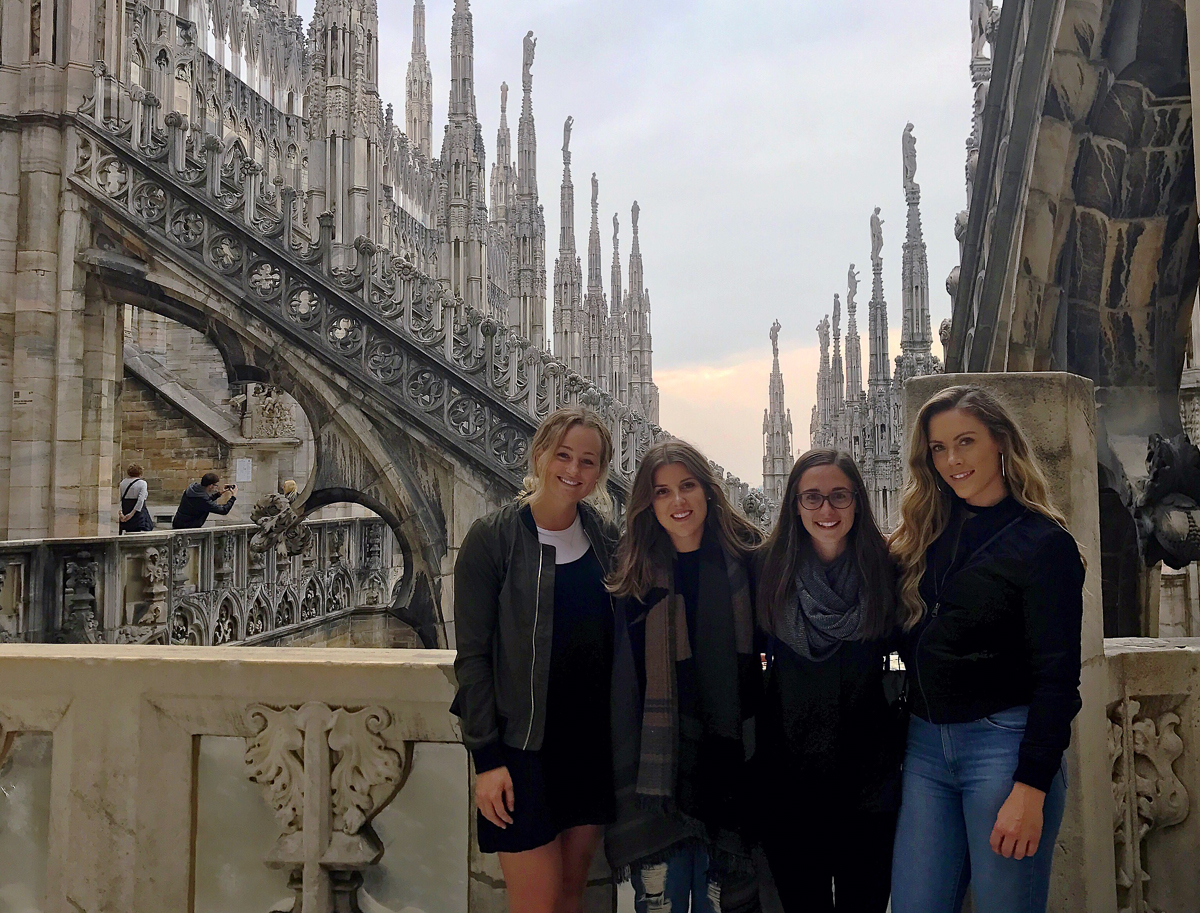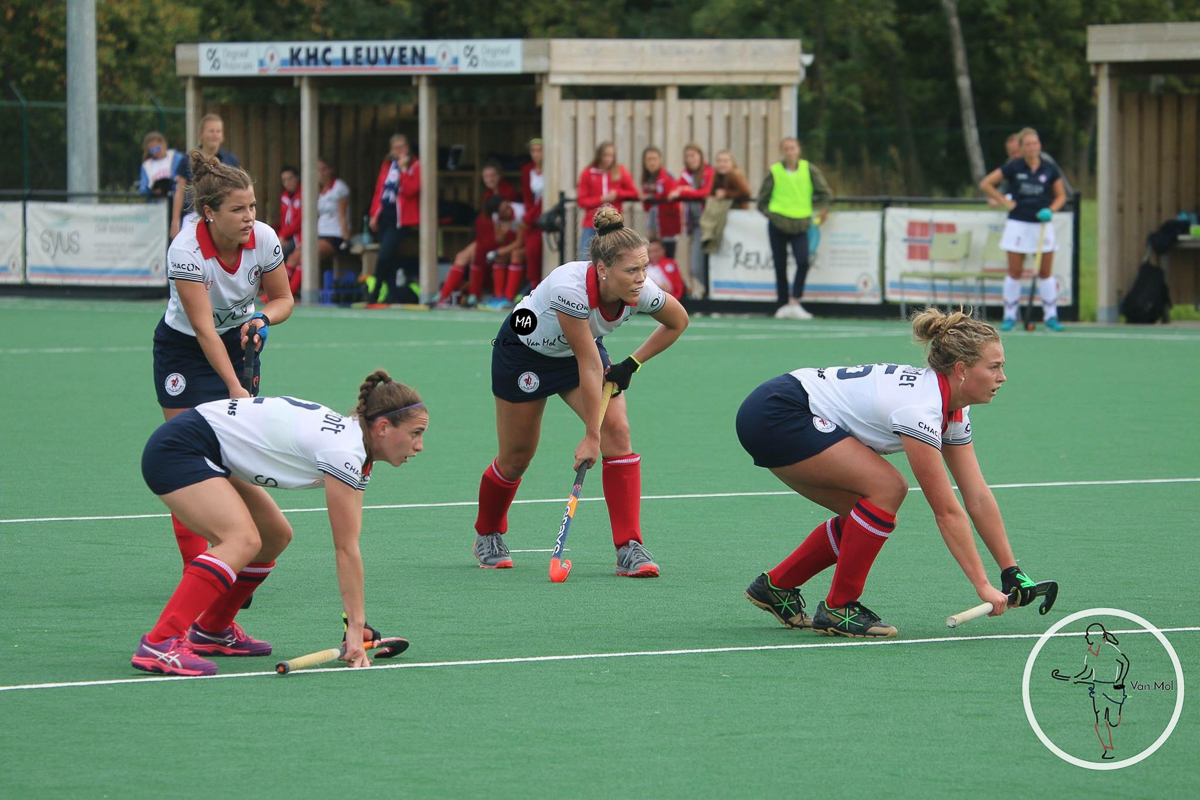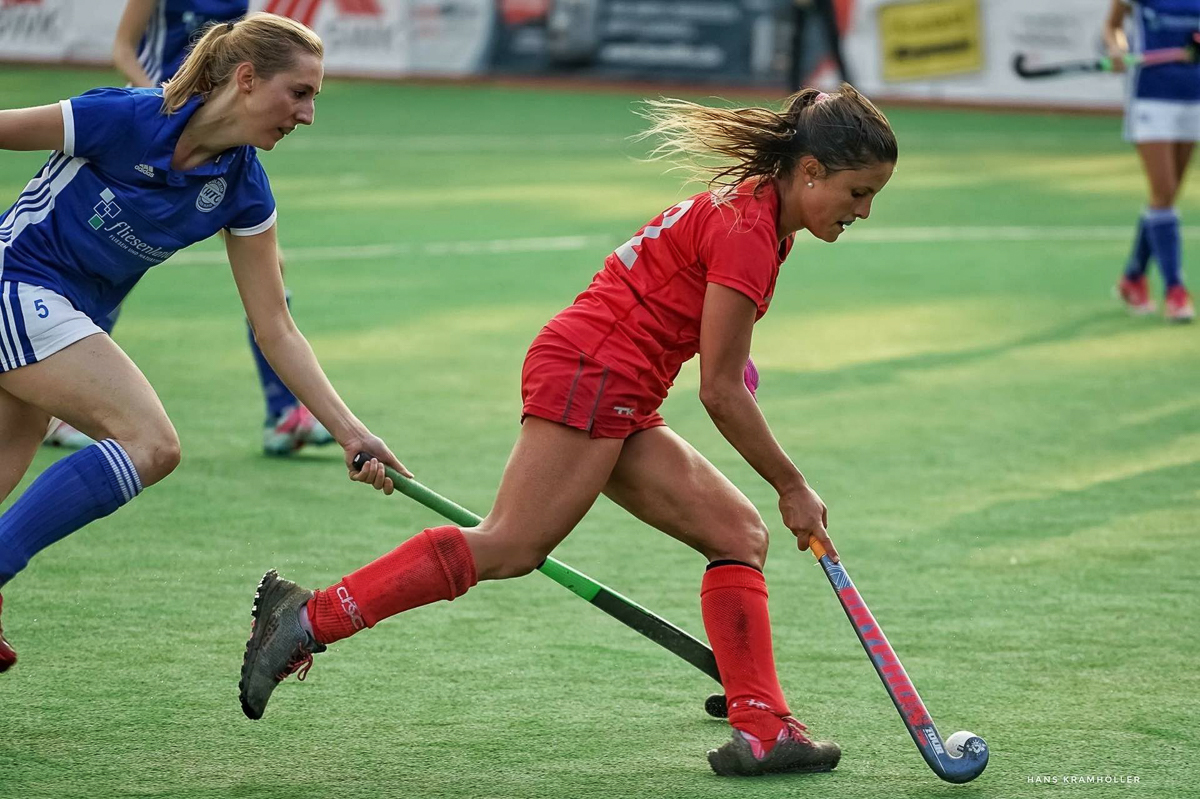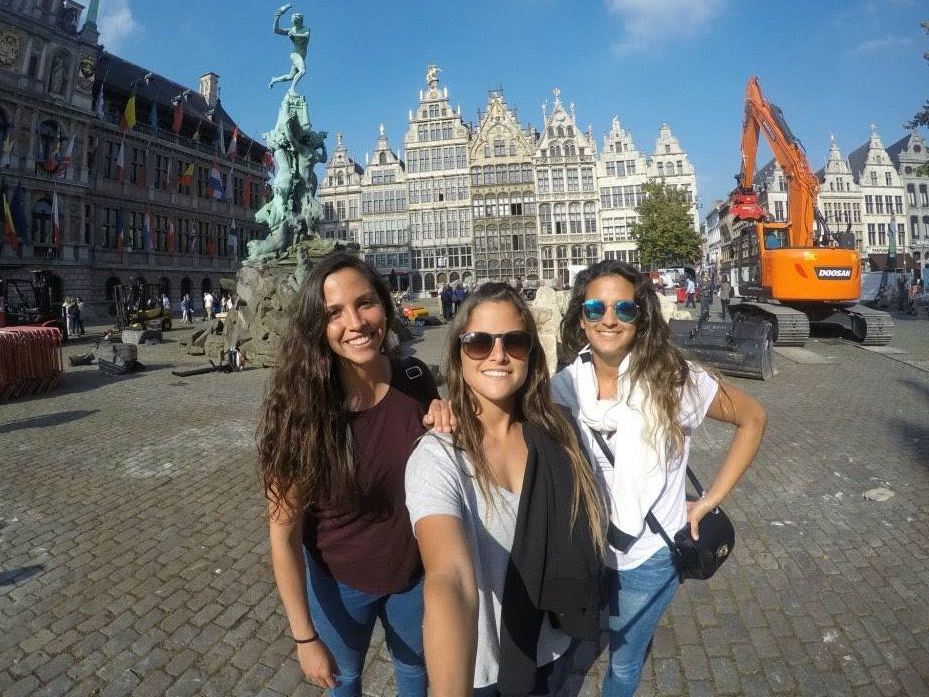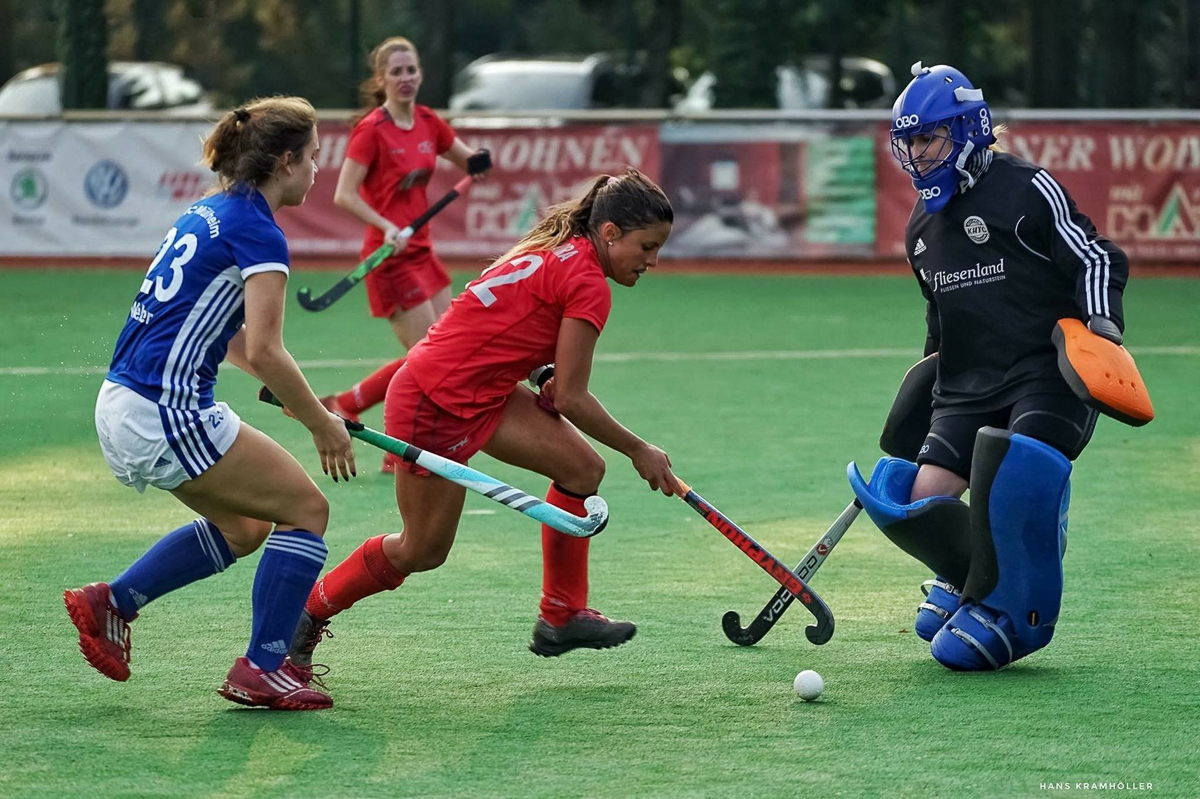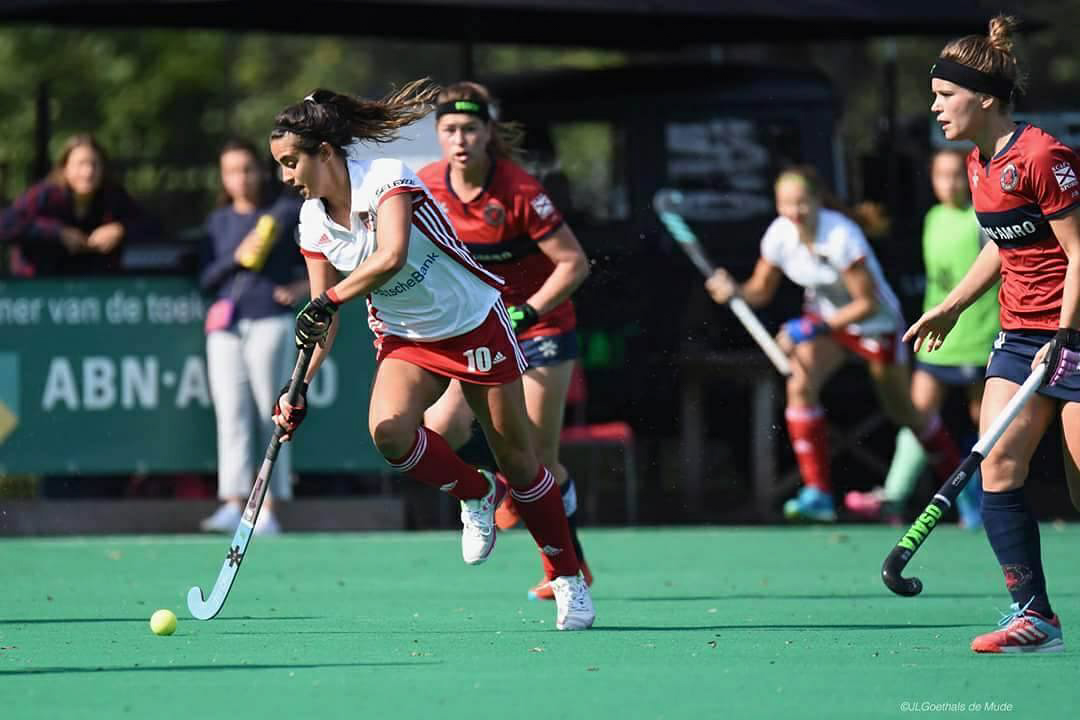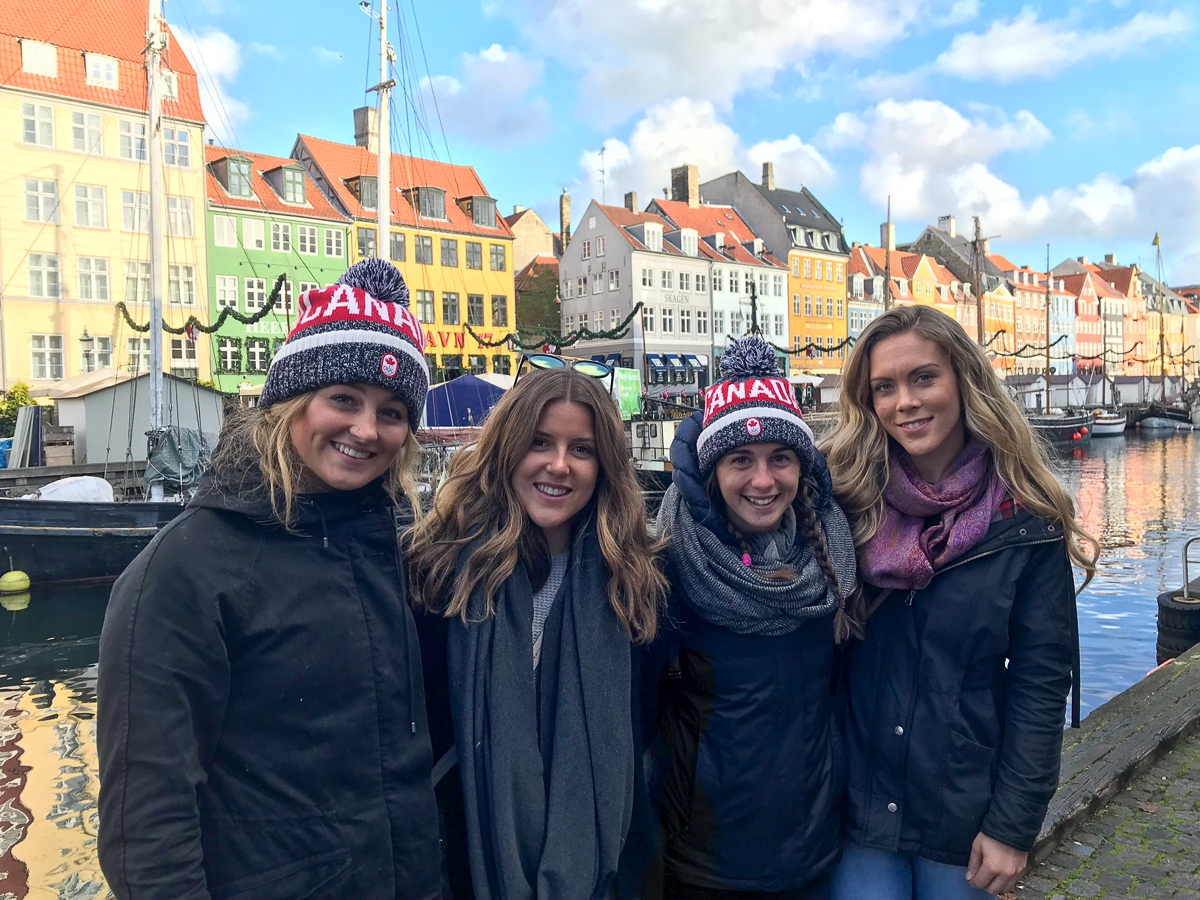
When several world class players from Europe were asked which female player they respected most on the international circuit, a common answer was Delfina Merino, the dynamo on the Argentina forward line. It wasn’t just Merino’s performances in the blue and white of Las Leonas that has won the striker praise but her performances in the European leagues.
Merino plays domestic hockey alongside Dutch superstars Caia van Maasakker and Carlien Dirkse van den Heuval and Great Britain goalkeeper Maddie Hinch. All three agree that by playing and training with Merino they have realised just what a sensational player she is.
“I wouldn’t say there is ‘fear’, when Merino enters the circle, said Hinch. But you know she is going to challenge all your abilities as a goalkeeper.”
“And she is a cool person off the pitch”, added van Maasakker, who says that Merino is a sparkling personality within the squad.
Merino has had two playing spells in Europe and has been a success on both occasions. She is one of a number of players that now choose to spend part of their career in Europe playing in the testing conditions of the various European leagues. Merino’s team SCHC is one of the fore-runners in the Dutch Hoofdklasse league, arguably the strongest domestic league in the world, but players from the Pan American region are popping up in Germany’s Bundesliga, the English National League and the Belgium men’s and women’s national leagues.
There is no doubt that life as a professional or semi-professional hockey player is an attractive proposition. Training and playing the sport you love, meeting new people, experiencing new cultures and travelling the world is a glamorous way of life … in theory. The reality can be very different. Learning a new language is tough, fitting into a different culture can be tricky and being on a continent several thousand miles away from home and loved ones can bring on crippling bouts of homesickness.
We spoke to three players who have moved way beyond their comfort zone to take up the challenge of making it as a player in Europe.
Amanda Woodcroft is a 24-year-old midfielder for the Canada national squad. She has been playing for one of the top Belgium clubs, Leuven, since August after Canada’s head coach gave his players the go-ahead to gain some playing experience in Europe. Four of the team – Woodcroft, Stephanie Norlander, Brienne Stairs and Rachel Donohoe – approached the club and were instantly signed up for the season. It has provided a challenge that Woodcroft is relishing.
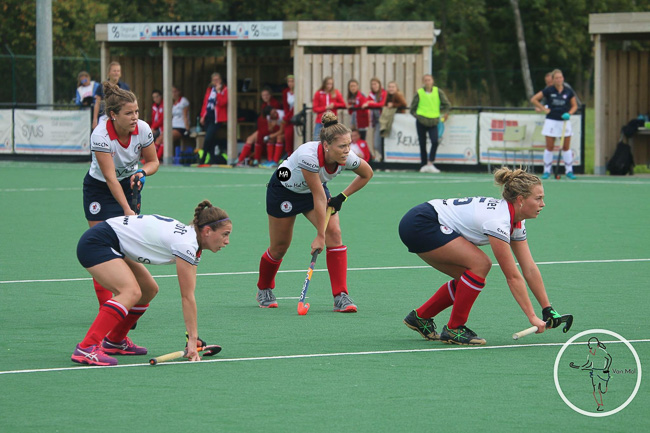
Donohoe, Woodcroft, Stairs and Norlander (Canada) playing for Leuven, Belgium - Picture: Emma van Mol
“The level of hockey is very high here so I have already learned a lot and gained valuable game experience. I believe my technical skills along with my tactical awareness have improved greatly. For club hockey, the level is higher here in Europe. Way more people play hockey in Europe, the biggest difference is the number of kids and male players compared to back in Canada. Also, the culture post-game is very different. We stay and socialize after the games here; the sport of hockey is valued more here than at home.”
The expected language barrier has not presented the problems that Woodcroft expected. Although Belgium has a dual language system – speaking French and Flemish depending upon which part of the country you are in – most people speak English. The training sessions and team meetings are mostly conducted in English, which makes life much easier.
The clubs are also very good at looking after the players while they are in the country. Players from overseas are provided with places to live, cars or bicycles to get around on and will be set up with coaching work to supplement their income. Woodcroft adds that her team mates and coaching staff are continuously checking that she is settling in to the Belgium way of life. For her, one of the biggest surprises has been the fact that bicycles are the main form of transport. “At home I would usually drive or walk to places but here everyone bikes around so we decided to join the culture and bike around as much as possible.”
Two more players who have experienced life in Belgium are Chile duo Manuela Urroz and Constanza Palma. Urroz is currently in her third season with Royal Antwerp Hockey Club while Palma did play for KHC Dragons but has now crossed the border and is playing for German club Crefelder HTC.
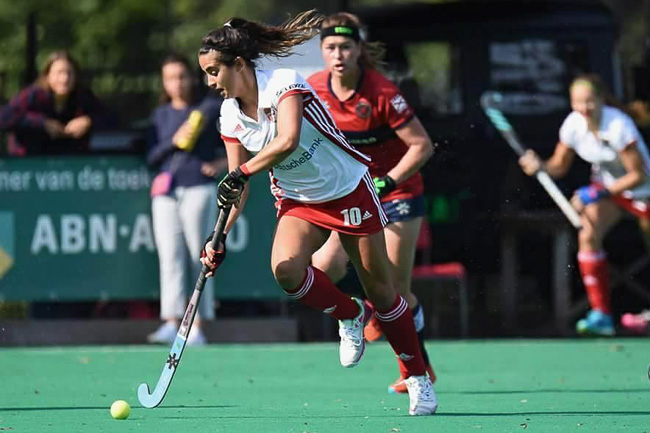
Manuela Urroz (Chile) playing for Antwerp, Belgium - Picture: JL. Goethals
“I always dreamed about playing hockey abroad,” says Urroz. “When I finished Law School I decided to take the challenge and leave my comfort zone. I wanted to improve my hockey, meet new people and get to know a different culture. It was definitely one of the best decisions I’ve ever made.
“Every season I get the chance to play with multiple Olympians. I get the chance to play with and against top players. The league is competitive and every week there are new surprises. I have improved technically and tactically and also became a smarter player.”
For Palma, the experience of playing abroad has opened her eyes to the many different styles of play. “In Germany they do a lot of man to man marking, something that we’re not used to in Chile. I have had to learn how to deal with that, how to move to receive the ball no matter whether you have someone marking you. Also the rhythm in the Belgium league is really high so it helps you to get used to playing at a high level which is comparable to the international level.”
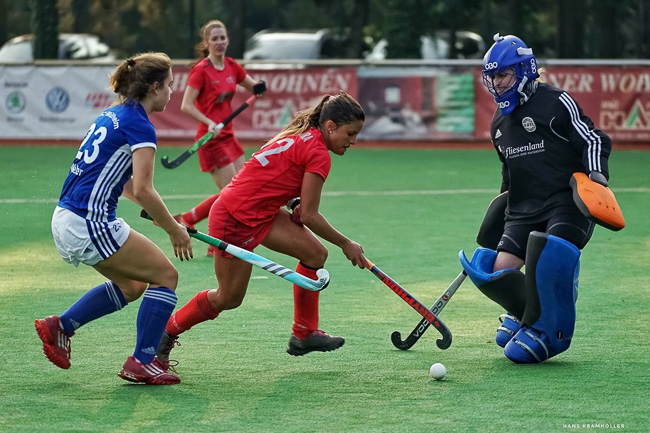
Constanza Palma (Chile) playing for Crefelder, Germany - Picture: Hans Kramhöller
Both Chile players have great language skills. Urroz speaks Spanish, English and French and is now learning the notoriously difficult Dutch language, while Palma thanks her lucky stars that she spent a year studying in the USA so her English is good. Being a polyglot is a great help as the European teams attract players from places as far afield as South Africa, Argentina and Poland.
Palma’s teammates at Crefelder have put together a dictionary of German hockey words for her, a comradely touch for which she is immensely grateful.
There is a huge difference in playing styles between the South Americans and the Europeans, both at international and club level. It is something that Urroz has really come to appreciate during her three years at Royal Antwerp. “I think that in Europe hockey is more structured and based on tactics. The South American game is more about technical skills. I think this is having a big impact on our national team. We have already seen that players that come back from Europe are more mature and playing on a higher hockey level.
“The Chilean league is not as competitive and professional as Europe. Although Royal Antwerp is one of the best teams in the league we know that we can’t relax because every week there are surprises. that makes it competitive and fun to play. I would definitely encourage my teammates to experience living abroad.”
For Woodcroft, Urroz and Palma, playing in Europe offers a hockey player’s dream – to live as a semi- or fully professional sports person. The daily routine involves gym sessions, training sessions and team meetings. All three also get involved in coaching at their clubs, either junior teams or lower league adult teams. It is the only time language barriers become a problem as many of the young players do not speak English. However, with plenty of other players around offering support, this is not something that is a massive obstacle.
The players also get a chance to explore the rest of Europe, experiencing the different cultures and histories. As Woodcroft says: “With every country being so close in Europe I have travelled somewhere new almost every week.”
Of course, there is a downside. “I love what I do but ‘yes’, I miss my family and friends,” says Urroz. “It’s a dream to play abroad but it comes with a price. You miss birthdays, weddings and important moments back home. Also you miss the daily routine with the national team, games and tournaments. But in the end I think it´s worth it.”
Palma agrees: “I always dreamed of living as a professional hockey player. I wanted to have time to go to the gym and be worried only about playing hockey. I came to Europe to see if I could raise my level a little bit and also, I was looking for something different to add to my style of playing. I think hockey is different in every country and it’s always interesting to go to other places because there’s always something new to learn.”
And without naming and embarrassing the player concerned, there is another obvious draw to living in Europe. “I really like the chocolate here in Belgium!”

